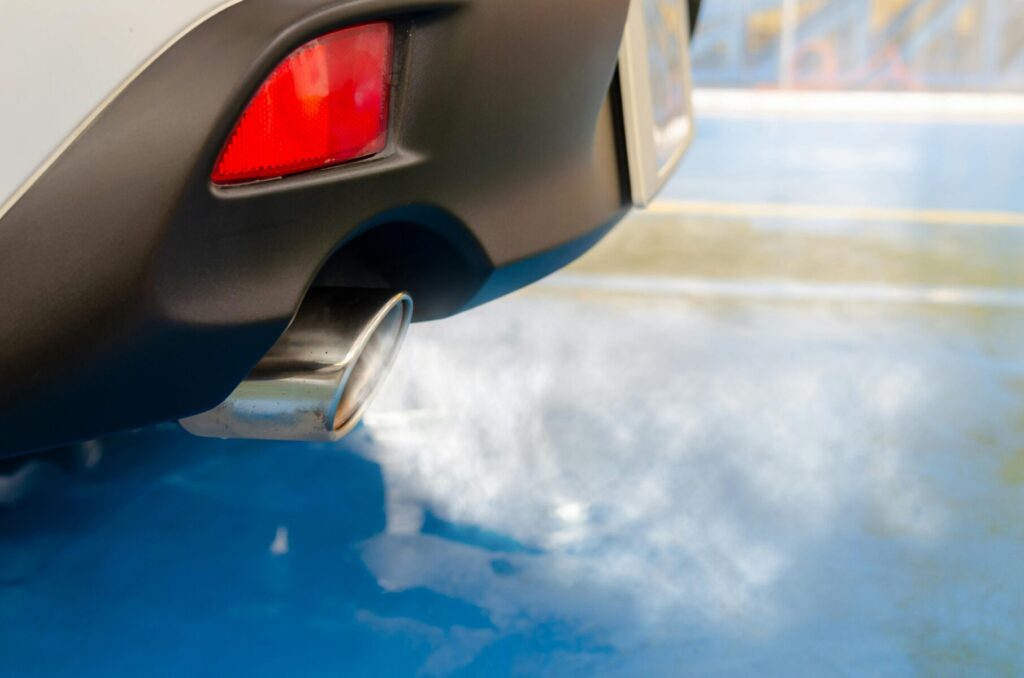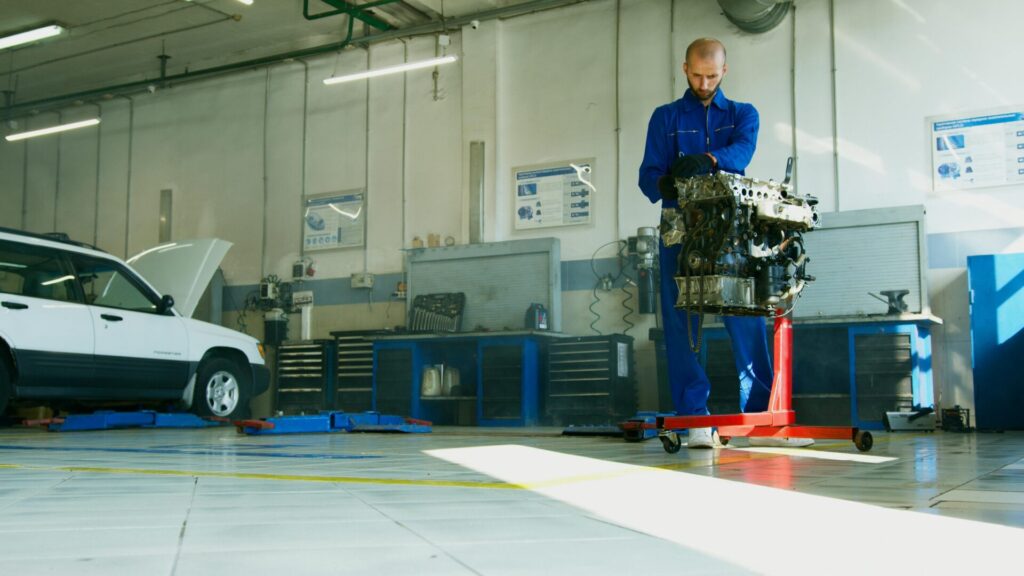
What is a dynamometer? A dynamometer test — also known as a “dyno test” — measures the torque and rotational speed of an engine. In dyno testing, operators use a device called a dynamometer that measures the power generated by the vehicle and/or engine.
You may have heard of the word “dynamometer” in the context of product testing and evaluation. We’ll cover this topic in this article.
But, how does a dynamometer work, and in what applications is it used?
Businesses and product development teams: if you’re building a product with an engine, using a dynamometer will help you ensure a safer, cleaner, and more profitable product. So, it’s worth paying attention to what comes next.
GlobalMRV here: in this article, we’ll discuss everything under the sun about dynamometers, including:
- Common types of dynamometer tests for vehicle emissions testing
- What dynamometers are used for
- How dynamometers can be used to help with data acquisition and testing
- Helpful alternatives to dynamometers that will help you with your dyno testing venture
- How GlobalMRV can help with engine power measuring
Types of dynamometer tests for vehicle emissions testing
| Type of dynamometer | Description |
| Eddy Current (EC) brake dynamometer | 1. Eddy Current (EC) dynamometers test absorption from EC brakes for specialized power equipment 2. EC dynos test power equipment up to 250 horsepower (HP) 3. EC dynamometers are compatible with engine and chassis dyno testing as well |
| Water brake dynamometer | 1. Suited for higher-power engines (think: heavy-duty, off-highway vehicles like locomotives) 2. Water brake dynamometers test engines ranging from 350- 10,000 HP 3. Water brake dynos are compatible with engine and chassis dyno testing |
| Alternating Current (AC) dynamometers | 1. AC dynamometers absorb energy that motors engines and/or vehicles 2. These dynos can simulate the forces on a vehicle when the vehicle is rolling downhill 3. AC dynamometers test power equipment that ranges from ten to thousands of horsepower 4. AC dynos are compatible with engine and chassis dyno testing |
| Other common dynamometers | 1. Crane hook dynamometers, rope brake dynamometers, fluid dynamometers, universal dynamometers, chassis dynamometers, and engine dynamometers |
What is a dynamometer?

While we gave a short description of a dynamometer in the introduction, let’s elaborate a little. A dynamometer — “dyno” for short — is a device that helps measure the force, moment of force (also called torque), and power of an engine.
For example, the power produced by an international combustion engine (ICE)-powered vehicle or electric vehicle (EV) can be measured by a dynamometer. Some dynamometers are designed to be used to collect information after the fact, while other dynamometers absorb information in real-time.
Let’s see how dynamometers work in action.
How dynamometers work

Dozens of different types of dynamometers exist, but for the sake of this article, we’ll focus on engine dynamometers to help you understand how dynamometers work.
First, in an engine dynamometer, water flow — proportional to the desired applied load you’re trying to test — creates resistance to the engine you’re testing. A controlled water flow through the inlet manifold is directed at the center of the rotor.
Next, the water is expelled through the outer dynamometer body by centrifugal force. As the water is directed outward, water is accelerated into pockets on the stationary stator plates where water is decelerated.
Finally, as continual acceleration and deceleration cause the dynamometer to absorb power produced by an engine, the water heats and is discharged through energy transfer.
And voila! We’re able to measure the force, torque, and power of an engine.
Note: for a more detailed description of how dynamometers work, we’d be happy to explain. Feel free to give us a call at +1 (716) 893-5800 for more information on how dynos work.
Types of dynamometers and their application

Dynamometers come in two different classes:
- Absorption dynamometers
- Power transmission dynamometers — also known as engine dynamometers and chassis dynamometers
Different dynamometers can test the power and torque of different instruments. Here are some of the most common dynamometers on today’s market:
- Crane hook dynamometers (used for under-hook crane weighing, calibration, and load testing)
- Rope brake dynamometers (used for measuring the power and torque of an engine or motor)
- Fluid dynamometers (used in automotive, locomotive, and industrial engine testing)
- Universal dynamometers (used for testing engines, motors, and pumps)
- Chassis and engine dynamometers (used for engine calibration and testing)
- Eddy current (EC) dynamometers (used for automotive testing)
- Alternating current (AC) dynamometers (used for testing the temperature, pressure speed, torque, and other key calibration data for automotive vehicles)
- Water brake dynamometers (used to simulate road loads for compliance testing)
While the fundamental testing procedures for dynamometers are the same, each dynamometer has a different use and application. Let’s take a look at how dynos are used across various industries.
Uses for dynamometers

Since dynamometers measure the power output of various types of engines, dynos have plenty of uses across different industries. Some of the most common uses of dynamometers include:
- Automotive sector: dynamometers can help test the performance and parameters of cars, motorcycles, and ATV engines. Dynos can also be used to test parameters such as horsepower and torque for vehicle emissions monitoring and reporting purposes.
- Manufacturing sector: dynamometers are used to ensure quality control, namely to ensure that machines operate within their parameters.
- Aerospace industry: dynamometers test the power output and efficiency of aircraft engines.
- Maritime and naval manufacturing: dynamometers can be used to test the engine output of submarines, marine vessels, and other naval ship engines.
- Construction and power equipment industry: dynamometers can even test power equipment and small engine-powered devices, such as chainsaws, leaf blowers, and lawnmowers.
Dynos work in many different ways, but shared between all applications is the ability to measure, verify, and report multiple data points for quality assurance and compliance purposes. We’ll cover this topic in the next section.
Data acquisition processes and test procedures with dynamometers

One of the main highlights of a dynamometer is its data acquisition system. The system is made with separate components:
- The commander
- The workstation
The commander usually acts as a desktop computer operated by software. The commander gives commands to the workstation, a touch-screen operated unit housed in a sturdy and durable industrial case.
The workstation acts as a precision load and throttle system that collects data and sends the data back to the commander to be processed, stored, and analyzed.
In other words, the workstation communicates with the commander to help measure data through dynamometer tests.
What’s key to the data acquisition process with dyno testing is the precision of the pressure transducers, which measure the airflow, air pressure, and other fluid pressures inside an engine.
An operator skilled in using dynamometers can read and interpret the hundreds of different measurements of various fluid pressures to draw conclusions about and make inferences regarding the engine being tested.
And that’s where portable emissions measurement systems (PEMS) can help.
The benefits of using portable emissions measurement systems (PEMS) with dynamometers

PEMS? Yes, portable emissions measurement systems.
Instead of using a costly dynamometer, you can opt for PEMS.
PEMS are data collection devices that help operation teams obtain large volumes of data for real-world driving emissions (RDE) purposes to help improve the performance and efficiency of internal combustion engines (ICE).
PEMS devices — like the classic Axion R/S — can measure over 60 different diagnostic testing regimes on just about any vehicle and engine design. Using LabVIEW©-based proprietary software, Axion R/S PEMS can measure mass-flow emissions like CO, CO₂, NO, and HC with the push of a button.
Best of all, PEMS are no larger than a business briefcase and are a money-saving alternative to costly traditional dynamometer testing.
Clocking in at 37 pounds total (16.8 kilograms), the lightweight and versatile Axion R/S can be used in remote locations, require minimal set-up time, and can be operated at a moment’s notice to collect hundreds of valuable data points for engine calibration and vehicle emissions testing needs.
Instead of using a costly dynamometer for your engine testing needs, try a portable and lightweight emissions measuring system (PEMS), integrated PEMS (iPEMS), and mini-PEMS device.
Did you know?
Did you know that the Environmental Protection Agency (EPA) is rolling out new regulatory and compliance measures for businesses and original equipment manufacturers (OEMs)?
We always keep our eye on EPA’s regulatory changes, so we can help you create a cleaner, greener, and more sustainable product. 🌍
For example, we’re currently keeping a close watch on the EPA’s plans to reconsider PM 2.5 regulations.
At GlobalMRV, Inc., we’re ready to help regulatory agencies and OEMs adapt to any changes, ensuring compliance and driving innovation.
To learn more about what we do to help you avoid headaches and stay in compliance, check us out on Instagram. Let’s work together for a more sustainable future! 💚
Need robust and dependable data acquisition solutions for your operation?

According to ScienceDirect.com (2021), dynamometers can help teams with vehicular testing under “pre-determined climatic conditions,” which can be helpful if you have the equipment and infrastructure to test vehicles.
But, if you’re looking to test vehicles under rugged or remote conditions, you’ll need another solution. Cue portable emissions measurement systems (PEMS).
Whether you’re looking for a tension dynamometer, hydraulic dynamometer, absorption dynamometer, or specialized dynamometer for your engine calibration operation, our portable emissions measurement systems (PEMS) are a cost-effective solution to dynamometers.
Designed for rugged, off-road, and remote testing, PEMS can go virtually anywhere and test hundreds of different testing regimes.
If you’re looking for reliable data acquisition equipment for your team’s engine calibration and testing needs, give us a call at +1 (716) 893-5800 or contact us.
Our team of researchers, analysts, engineers, and technicians would be happy to set you up with a risk-free consultation and trial of our PEMS products for your team’s operational testing needs.
Let’s make our world a greener, cleaner place to live. We look forward to chatting with you soon.
GlobalMRV: Driving the Future of Emissions Testing with Real-Time Data Solutions